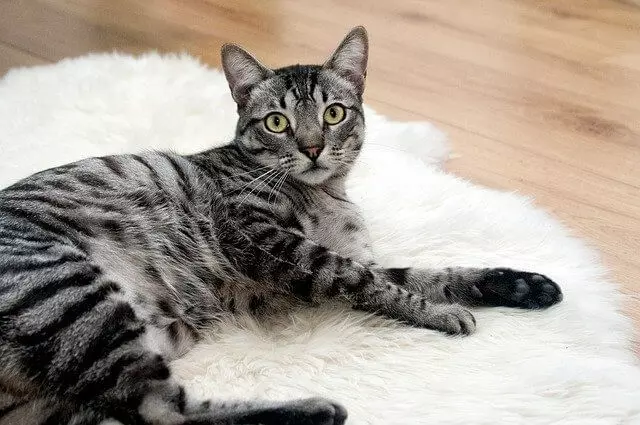Arthritis is a generic term for abnormal joint movements. When the ligament is degraded faster than it is restored, several alterations occur.
Weight loss, lack of appetite, sadness, change in overall attitude, poor grooming habits, urinations or feces outside litter pan, and inability to jump on and off objects are all clinical indications of osteoarthritis in cats.
Cartilage acts as a cushion between the bones. Cats that are middle-aged to older might cause joint discomfort. It can cause chronic pain and have a severe impact on your cat’s quality of life.
The symptoms of arthritis in cats
- Decreased activity
- Reduce mobility
- Altered grooming
- Temperament changes
- Trouble jumping on/off surfaces
- Moving away from the litter box
- Social reclusiveness
Causes for arthritis in cats
•Age
As cats get older, cartilage will start to degenerate. Though joint pain is increasingly normal in senior cats, young cats can experience the ill effects of arthritis.
• Breed
Certain cat breeds are progressively inclined to joint pain and diminished mobility.
• Excess weight
Excess weight implies an abundance of weight on the joints and cartilages, which can prompt joint pain and joint wellbeing problems.
• Hereditary defects
Some cats breed may have genetic conditions that make them progressively inclined to create joint inflammation further down the way.
• Accidents or trauma
Injury to ligaments brought by mishaps can harm cartilage, resulting in joint inflammation sometimes down the way and antagonistically influencing mobility.
• Infection
Infections can prompt the pulverization of ligament and joint tissue.
How is arthritis diagnosed?
A veterinarian may lead a physical exam, take radiographs, and perform another symptomatic test to help decide the reason for the torment and aggravation in your cat joint.
Managing arthritis in cats
Managing joint inflammation is to planning a meeting with your veterinarian. Generally, blood tests and radiography will be required to decide precisely what is going on in your cat joints.
- Management of weight
This is the most significant part of dealing with any pet with arthritis. Over-weight will put relatively more pressure on their joints and along these lines cause progressively limited aggravation and disturbance to the joints which transform into the movement of arthritis. Cats need to get in shape step by step to avoid digestion issues.
- The environment
In certain circumstances, simple modifications to your home design might have an influence on your cat’s comfort. Make a comfortable and warm resting area for your cat. Make a low-sided kitty litter dish available for easy access and to avoid toileting mishaps. Trim your cat’s nails on a regular basis. Brush your cat’s coat on a regular basis.
- Veterinary treatments
Various veterinary drugs are available to treat osteoarthritis in dogs. The best options are determined by a number of factors, including their age, the severity of their symptoms, the course of their condition, and whether they have any other health issues.
It’s important to remember that all individuals with joint discomfort should be thoroughly examined before initiating therapy.
Conclusion:
The diagnosis of osteoarthritis in cats is difficult in any case, even for the most experienced veterinarian. Osteoarthritis in cats may soon become a widely recognized and well-managed condition, reducing the silent suffering of many older cats, as better approaches for pain assessment.
Consult your local veterinarian if you suspect your cat is suffering from any of the symptoms and are concerned that he or she may be suffering from arthritis. You must look after your pet properly. It is your job to ensure that your pet is happy and healthy.








